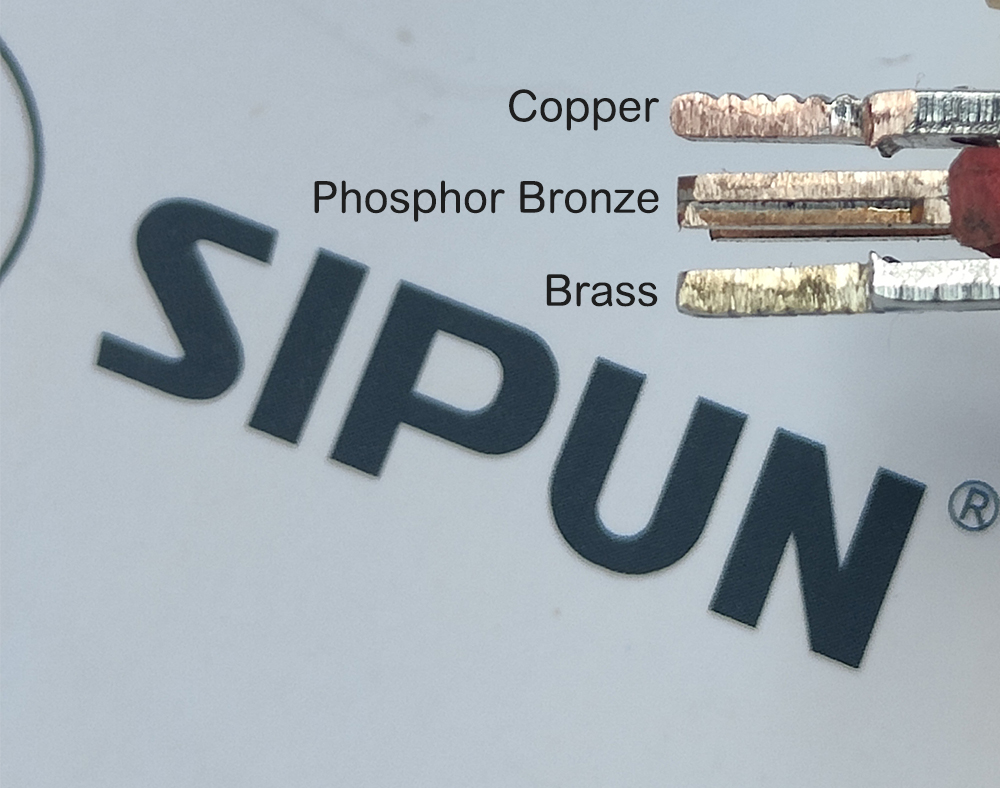The materials of conductive bodies in terminal blocks are diverse, and today we will introduce how to distinguish between various materials of conductive bodies.
1.Brass: Brass is a common material for conductive bodies, characterized by its bright yellow color. It possesses excellent conductivity and corrosion resistance, thus widely used in numerous electrical connections. The conductive parts in SIPUN’s SEK series and STS2 series terminal blocks are made of brass.
2.Copper: copper has a reddish-purple hue. Compared to brass, copper boasts higher conductivity, making it a preferred choice in applications where high conductivity is required. Conductive parts in SIPUN’s SUK series, ST3 series, and ST2 series terminal blocks are crafted from copper material.
3.Phosphor Bronze: Phosphor bronze bears a color resembling copper but slightly darker. While on par with copper in terms of conductivity, phosphor bronze stands out due to its phosphorus content, offering superior corrosion resistance and elasticity. Hence, it finds more suitability in special environments. For instance, the conductive parts of the SUK-4RD fuse terminal block consist of phosphor bronze, providing robust clamping force to grip the fuse core without deformation over time, while ensuring high conductivity. Similarly, SIPUN’s FBS series pluggable center connectors utilize phosphor bronze material, ensuring snug fitting into terminal receptacles without looseness, while delivering powerful conductivity.
Differentiating Various Conductive Materials with One Diagram:

Post time: Apr-10-2024
